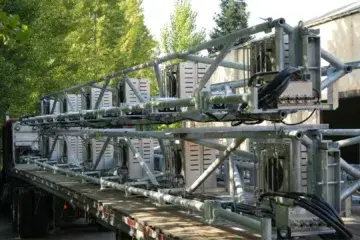In news that may have been lost in the Christmas rush, a huge step forward has been taken by the Tennessee Valley Authority in relation to their response to the ongoing invasive carp crisis currently affecting Tennessee and the wider Mississippi basin.
In a statement released on Friday 17 December, the TVA issued a final Environmental Assessment that stated BioAcoustic Fish Fences (BAFF) fitted with carbon dioxide emitters will be installed on seven dams across the TVA’s jurisdiction of Tennessee, Kentucky, alongside parts of Georgia and Alabama,’ subject to federal funding
The seven dams that have been earmarked for BAFF installation are:
- Kentucky Dam – Livingston and Marshall Counties, Kentucky
- Wilson Dam – Lauderdale and Colbert County, Alabama
- Pickwick Landing Dam – Harding County, Tennessee
- Guntersville Dam – Marshall County, Alabama
- Nickajack Dam – Marion County, Tennessee
- Chickamauga Dam – Chattanooga, Tennessee
- Watts Bar Dam – Meigs and Rhea Counties, Tennessee
These locations are spread throughout the Eastern Mississippi Basin and are man-made choke points that will allow the installation of the BAFF system.
What are BioAcoustic Fish Fences?
The BioAcoustic Fish Fence (BAFF) is a guidance system designed for precision. In practice it is similar to a conventional angled screen, but creates a wall of sound and bubbles rather than a physical barrier. This not only reduces the environmental impact, but also ensures waterways remain navigable.
Versatile Fish Deterrent
The BAFF system is often used in environments where a deep channel guarantees clearance for vessels that need to use the waterway. Units can be sunk into the bed, preventing interference.
Previous applications include hydro-electric intakes, blocking rivers to prevent the migration of species such as Asian carp, and guiding downward migrating fish like salmon smolt around structures such as dams and fish passes and into major river channels.
Long Road Ahead
Despite the confirmation of intent, the Tennessee Valley Authority is not the lead agency on this project, and federal funding is still required.
The confirmation is the latest step in a decades-long, multi-agency effort to mitigate the spread of invasive carp in the Mississippi River basin. One other example of this effort is the removal of 12 to 15 million carp from Barkley and Kentucky Lakes in the past three years.
According to the Tennessee Wildlife Resources Agency, “Invasive carp is an umbrella term for bighead, silver, black, and grass carp—are originally from the Yangtze and Amur River systems in China. The non-native fish were originally introduced for aquaculture purposes in the 1970s but escaped into natural waterways in the late 80s and early 90s. Today, they pose a severe threat to native fish and ecosystems, and silver carp, which are known to unexpectedly launch themselves out of the water, also pose a serious hazard to boaters.”
For more information on the BAFF system, please contact us at [email protected].


